While the rest of the world saw the scorched aftermath of the most destructive wildfire in California’s history, artist Shane Grammer saw an empty canvas on which to create beauty and, perhaps, hope.
A creative director for theme parks, the former graffiti artist recently spent a week in Paradise, the town devastated by last year’s Camp Fire. While there, he painted murals on the remnants of abandoned houses and burned-out cars, offering a haunting tribute to a community that has lost almost everything.
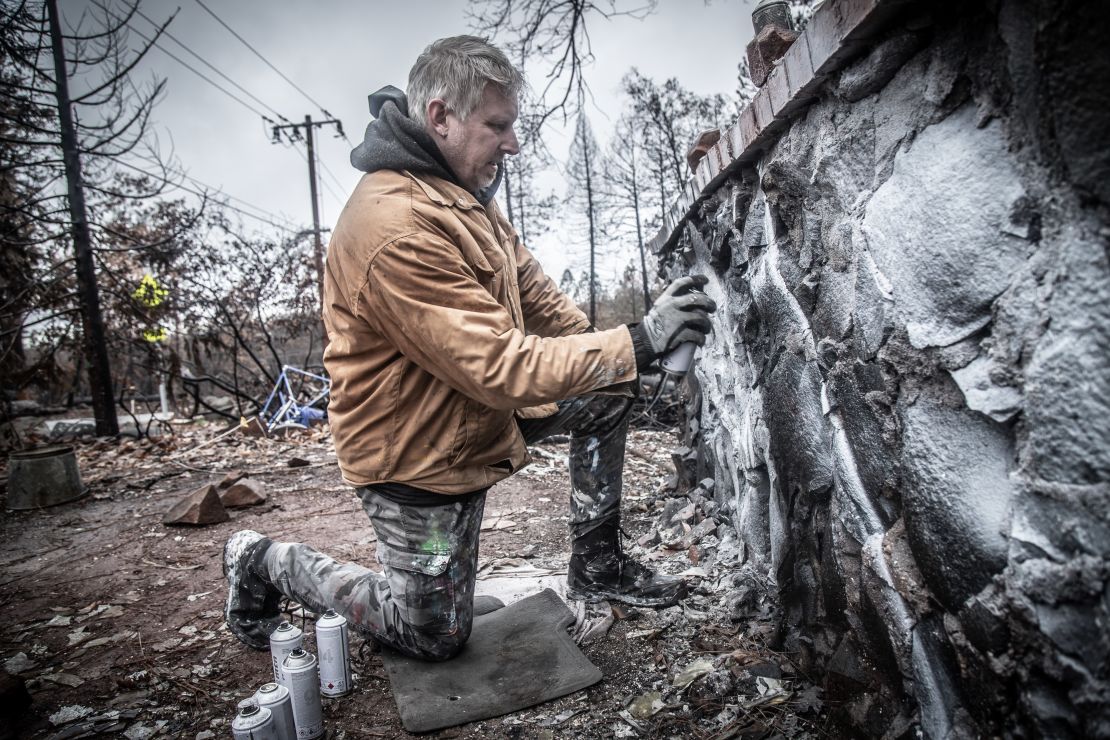
The project was especially personal for the artist. Though he now lives in Southern California, Grammer grew up near Paradise and has previously spent time in the town. He estimates that about two dozen of his childhood friends lost homes in the fire, which killed 86 people and destroyed approximately 19,000 buildings last November.
One of the friends affected, Shane Edwards, said that Grammer’s idea formed after he saw images of the devastation on Facebook.
“I always wanted a piece of (his) artwork,” Edwards explained in a phone interview. “He saw the photos of what was left of my house and asked to paint the fireplace.”
A few days after Christmas, the pair met up at the debris-strewn site. Grammer then used spray paint to transform Edwards’ charred chimney into a portrait of a woman, a piece he called “Beauty Among the Ashes.”
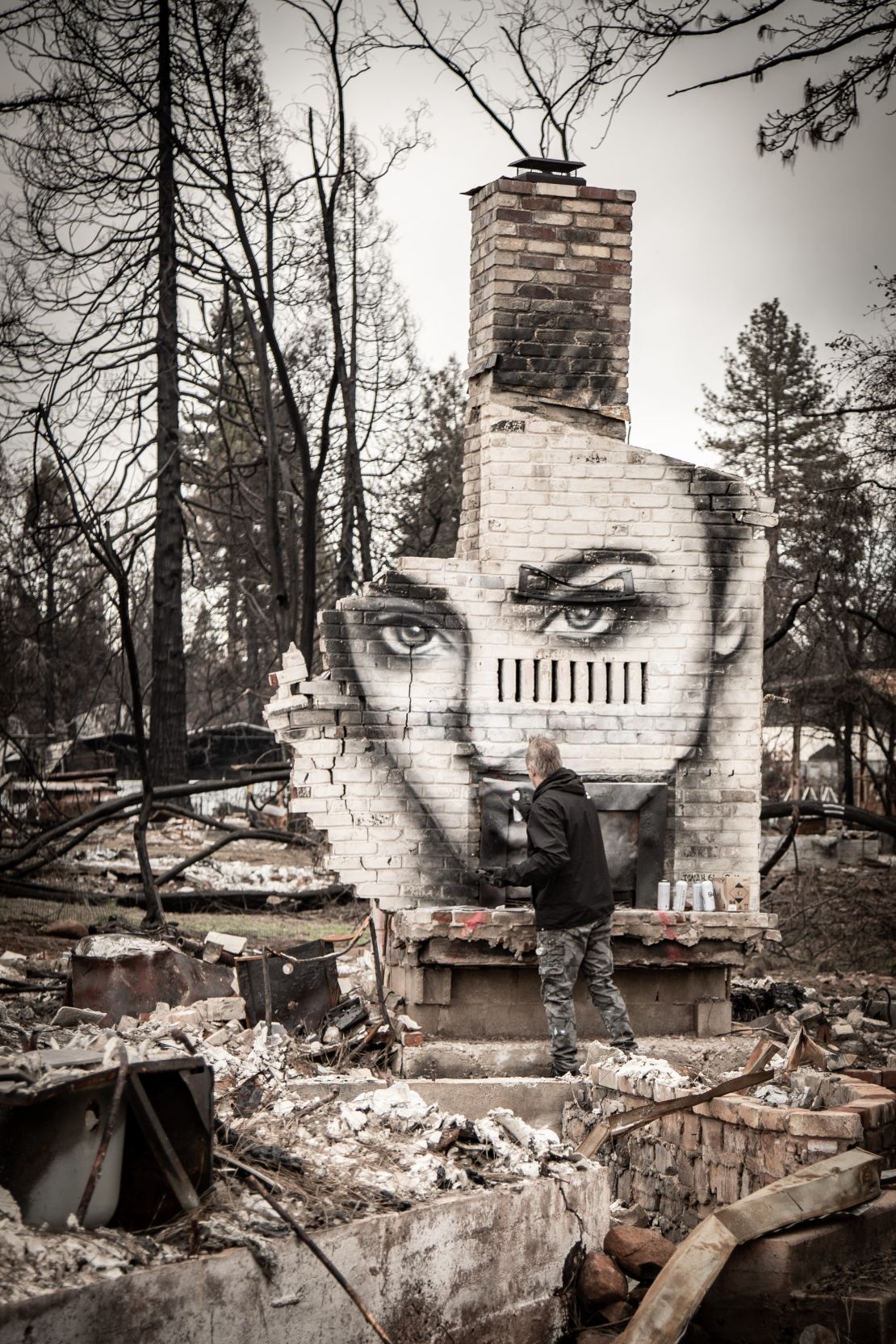
The house is located at the entrance to Paradise, and Edwards wants visitors to the town “get a sense of hope” from the artwork. His 15-year-old son “thinks it’s the coolest,” he added.
A viral photo
Grammer described feeling torn when he first arrived in Paradise.
“It really was a tug of war,” he said in a phone interview. “I am excited to see this canvas, rusted burned metal, broken chimneys, burned cars everywhere. The eye is trying to absorb everything that happened. Emotionally, it was tough. I want to do my art; I want to be sensitive.”
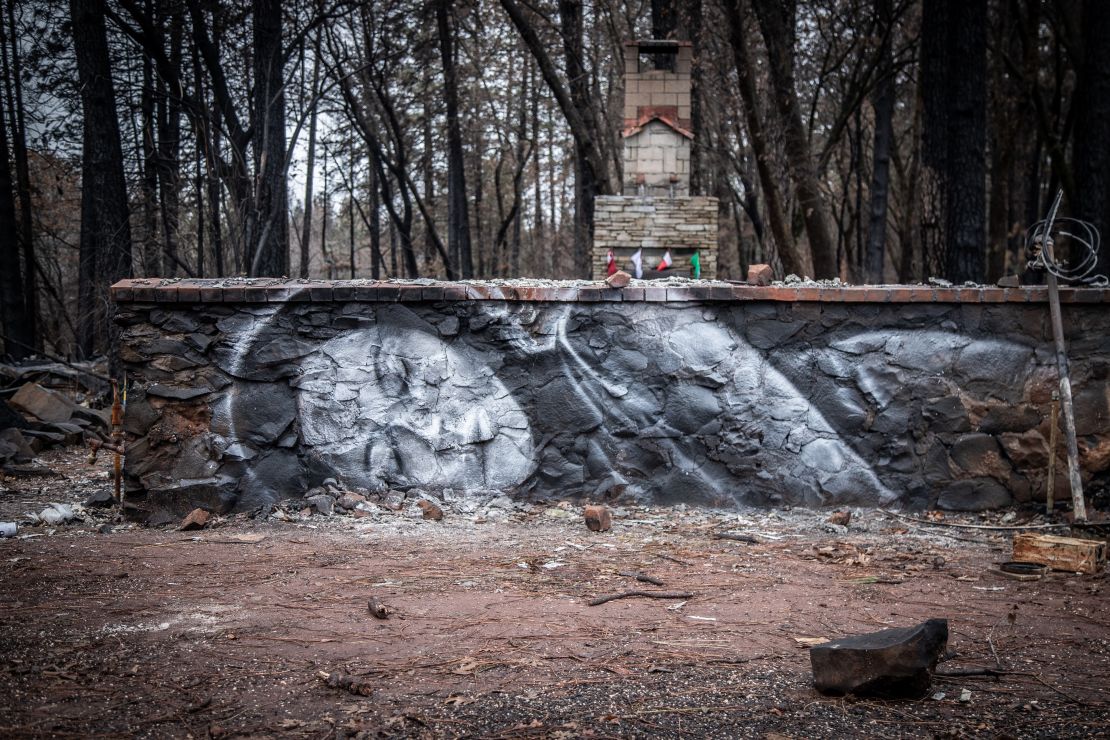
He need not have worried. After a photo of the first mural went viral, Grammer’s Facebook page was flooded with support and requests from other fire survivors.
One of the more personal inquiries came from the artist’s high school friend, Nicole Weddig, whose family lost their home in the blaze. Grammer decided to base a mural on a photo of Weddig’s daughter, Eleanor, from when she was 3 years old.
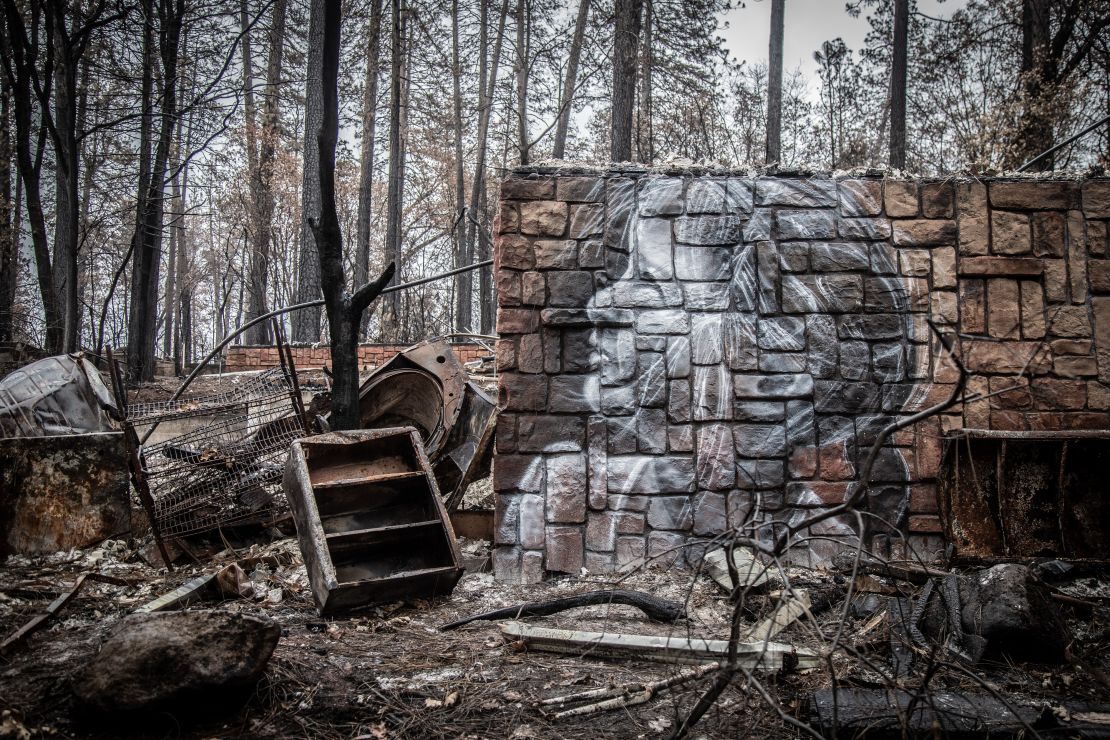
“(It’s) an image where she is looking up… looking at the future, dreaming of her home,” he said. “It’s the pure joy of childhood, a glimmer of hopefulness in such a devastated spot.”
After seeing photos of the mural, Eleanor, now age 8, has requested that the wall accompany the family to their future homes, Grammer said. “I think it gave Eleanor some peace,” he added.
‘Moving people’ with art
Grammer eventually spent a week Paradise, painting and meeting with members of the town’s community.
“They would see what I was doing and tell me their harrowing stories of leaving the fire – (it was) just chilling,” he recalled, adding: “As an artist, the dream is to move people with your art … and I could see how it moved them.”

As a devout Christian, Grammer set out to find a church on which he could paint a portrait of Jesus.
Jeana Darby, from Paradise’s Hope Christian Church, offered up her building’s remains for the project.
“I did it in an hour,” Grammer said. “The spray paint just melted into the residue and made this symbol, both for people thanking God for saving us (for) and asking, ‘God why did you do this?’”
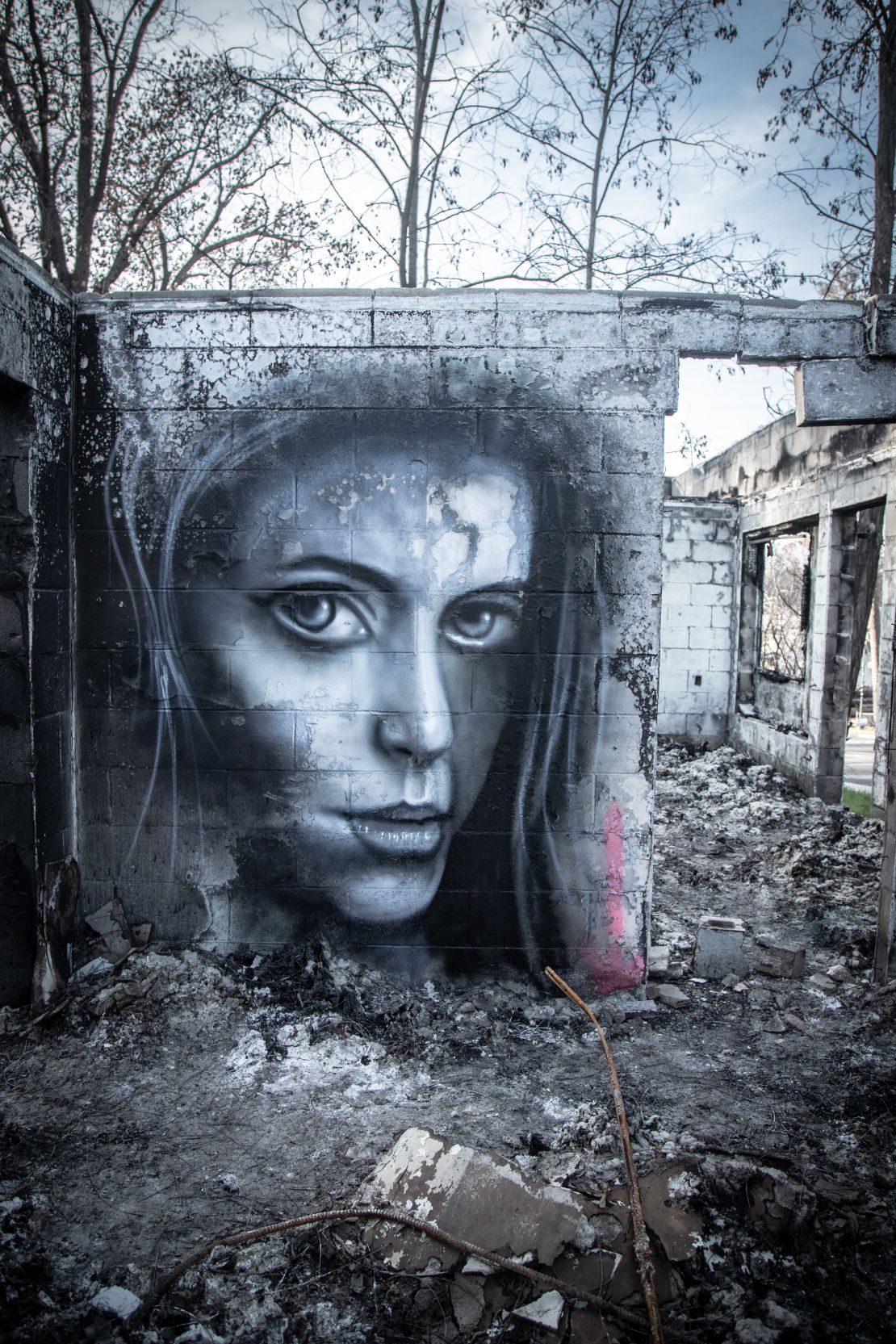
For Darby, who was baptized at the church, it was “a breathtaking display that Jesus is still with us in the midst of tragedy.”
Emotionally trying
Grammer described struggling with the accolades he’s received because of the losses that made them possible. For one particularly difficult mural, the artist asked Paradise resident Suzy Drews if he could recreate a photograph of her mother, who died in the blaze.

“I wanted to do something powerful for them, to honor the family,” he said.
Drews recalled being speechless when she saw the portrait: “He captured the essence of my Mom – the wonderment, the innocence,” she said.
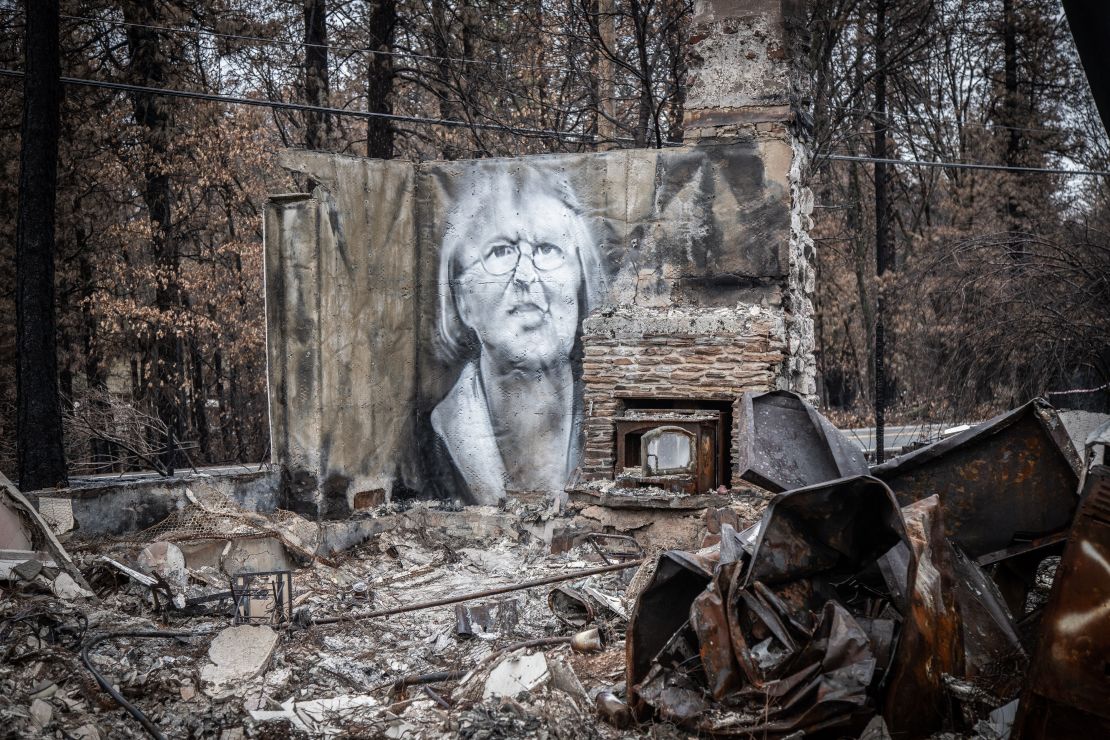
Grammer plans to return to Paradise to create more murals, despite the emotional distress he’s endured as a result of the project.
“I work on art work that is deeply passionate, and it’s always been my desire to move people emotionally,” he said. Suddenly it happened, and I just find myself breaking down and crying.”
“I will be forever grateful for what I am doing here,” he added.



